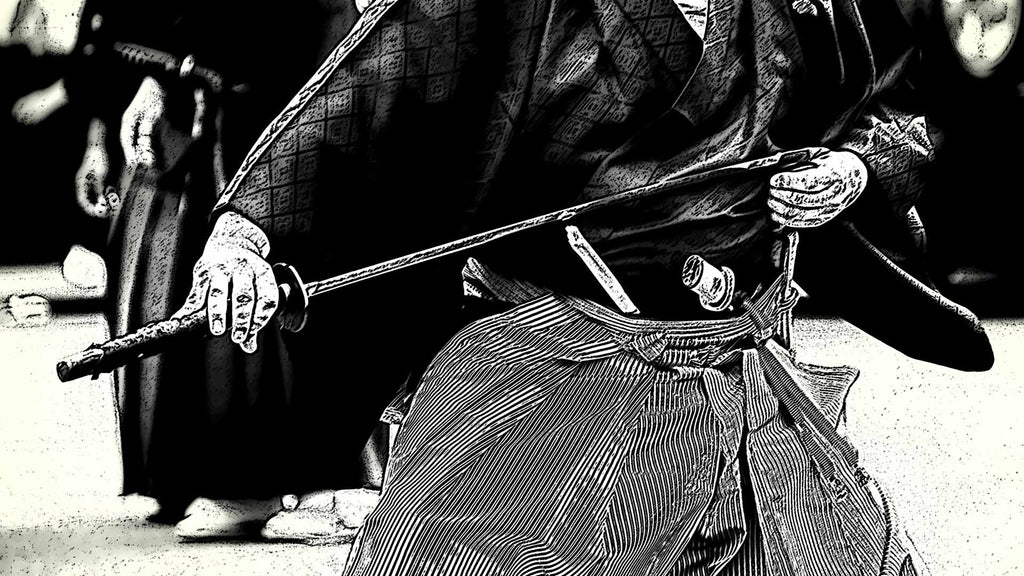Learn to identify counterfeit Japanese swords (gansaku). This guide explains key indicators of fake katanas, including tang analysis, material inconsistencies, and misleading certificates. By understanding these factors, you can confidently distinguish authentic nihonto from replicas and avoid costly mistakes.
1. Identifying Counterfeit Katanas
1.1 What is Gansaku?
Gansaku (贋作) is the Japanese term for a counterfeit sword. The practice of creating fake Japanese swords dates back to the Kamakura period (1185-1333). By the Muromachi period (1336-1573), certificates of authenticity, including inscriptions on the tang, were already in use, highlighting the prevalence of counterfeiting even then. The Edo period (1603-1867) saw a further sophistication of these techniques, resulting in a wide variety of fake swords.
One common method involves crafting a sword similar in shape to a genuine piece and then adding a false signature (inscription) to inflate its value. Surprisingly, some gansaku are technically superior to authentic swords of lesser quality, making identification challenging. Another prevalent type of gansaku involves adding gold inscriptions. This practice originated in the Momoyama period (1573-1603) when the Hon'ami family began authenticating swords. They would add gold inscriptions to legitimate older swords with worn tang inscriptions or add vermilion inscriptions to new blades. Because this practice was exclusive to the Hon’ami family, many counterfeiters began adding gold or vermilion inscriptions to their gansaku, often removing existing obscure signatures and replacing them with famous ones.
1.2 Key Indicators of a Counterfeit Katana
| Feature | Authentic Katana | Counterfeit Katana |
|---|---|---|
| Tang (Nakago) | Consistent with the blade's style and period. File marks (yasurime) are distinct and purposeful. Natural aging and patina. | Often mismatched to the blade's style. File marks may be crude or inconsistent. Artificial rust or patina. |
| Blade (Sugata) | Harmonious curves and proportions specific to the school or smith. Consistent forging and tempering patterns (hamon). | Often lacks the subtle nuances of genuine blades. Hamon may be inconsistent or artificially created. |
| Signature (Mei) | Crisp and clear, matching known examples of the smith's work. Placement and style consistent with the period. | May be poorly executed or differ from known examples. Often added later or forged. |
| Fittings (Koshirae) | Age and style should match the sword. High-quality materials and craftsmanship. | May be mismatched or of poor quality. Modern reproductions often used. |
1.3 Careful Examination and Research
Identifying gansaku requires careful observation and a deep understanding of Japanese sword history, styles, and schools. Studying genuine swords in museums or reputable collections is crucial for developing a discerning eye. Pay close attention to the tang, as it often reveals inconsistencies. The shape, file marks, patina, and inscription should all be scrutinized. Artificial rust can sometimes be detected by its unnatural appearance and feel, but experience with authentic swords is essential for making this distinction.
While certificates of authenticity can be helpful, they are not foolproof. Counterfeit certificates exist, so it's advisable to verify them with the issuing organization. Similarly, the box and scabbard (saya) can offer clues, but they can also be easily reproduced or mismatched. Ultimately, the best way to avoid purchasing a gansaku is to buy from reputable dealers and to invest time in studying authentic Japanese swords. Developing a keen eye for quality and authenticity requires continuous learning and hands-on experience.

Want to buy authentic Samurai swords directly from Japan? Then TOZANDO is your best partner!
Related Articles

Leave a comment: